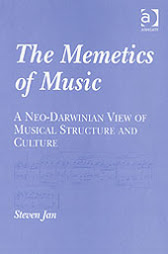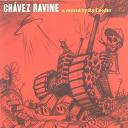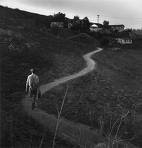Saturday, October 3, 2009
Healing the Heart, Healing the Community with Murals
Before the advent of the super-powered art agent in the 1950s, and the virtual explosion of art buying for investment purposes in the 1980s and ‘90s, painting and sculpture existed as a means for people to measure themselves against the greater universal order. By applying their hands to clay or pigment, humans could communicate wonder at what they found around them. From the caves of Lascaux and Chauvet to the graffiti artists of Los Angeles, community art simultaneously reflects a culture’s hopes, pains and goals, while asking it to become more than it is, a healed, whole entity capable of serving and supporting its denizens. Rather than focusing on a completed product, community art becomes process. Its value is in the doing.Southern France has yielded the greatest cache of Paleolithic cave art currently known. In order to photograph the individual friezes, explorers braved rocky entrances crowded with glittering stalagmites and stalactites, sometimes shimmying into small openings on their stomachs. Carrying lights and tools for digging, they found basic drawings of humans, animals and symbols. What they meant to the people who made them has been open to interpretation since the 1950s.The Chauvet caves, discovered in 1995 and thought at first to be faked, featured large red dots painted directly onto the walls of the cave with ancient earth pigments. Animals present in the drawings helped scientists to date the paintings according to which species were known to exist on earth at that time. As well, carbon-dating techniques were employed to place the drawings at approximately 18.500 years old. For the first time in history, explorers saw what are thought to be the oldest drawings currently in existence.The animals most commonly represented in the caves are horses, red deer and bears. But additionally, there are images of rhinos and paintings of what experts believe are leopards and hyenas. Set deep into fire-blackened walls are geometric signs arranged into panels: several series of dots, a semicircle of smaller circles, many v-shaped bat-like symbols, and other jottings that resemble insects with countless legs. In Chauvet, as many as five hundred images are crowded into these tight spaces that housed our earliest ancestors.Most agree that the caves probably date from the pre-Magdalenian period, the Soultrean ( 18,000 to 21,000 years ago). Other art from the Ardeche caves like Lascaux contain similar pigmentation patterns and red silhouettes of human hands. As well, they represent similar painting styles, with figures appearing faced front, but with profiled bodies, which is true particularly for the depictions of animals. How figures are grouped seems to be as important as which figures are represented. Sometimes teams of bison or ibex are found facing the same way, seeming to stampede across the wall.What scientists have not been able to sufficiently answer, though, is why the cave art was made, or what it could have meant to the inhabitants of the caves. Scholars like Marija Gimbutas point to a need for ancient peoples to measure the natural world using these symbols because they depended on hunting and growing for survival. To her, the ubiquitous dots could represent the phases of the sun and moon, crucial to the cultivation of crops. Gimbutas traces many of the remaining symbols to the ancient goddess civilizations such as Catal Huyuk in Turkey, which used dots, spirals and chevron shapes to denote the cycles of birth, death and rebirth. Animals and humans alike cannot escape their role in these inevitable cycles. Art goes on after life is lost. As if to prove her words true, handprints made by spraying or blowing pigment around the artist’s hand can be found in virtually all of the ancient caves, as if the people making them were trying to cement their existence in paint, to show that they had once existed.The natural ancestors of the ancient cave painters are today’s mural artists. Though some have suffered derision at the hands of the traditional art establishment who, after Keith Haring’s death, wanted nothing further to do with the taggers, or run afoul of law enforcement for not staying within the lines, several have continued to make powerful community art aimed at healing complex societal problems and building bridges between seemingly disparate areas of the city. Youth counselors like Manuel Velasquez have worked with middle school kids to offer an alternative to gang membership, helping them channel rage and fear into a Sylmar mural of mourning and hope. Muralists like Ernesto de la Loza has shepherded local Boyle Heights youth into painting posses to heal the violence that sprang from the Rodney King beatings and subsequent not-guilty verdicts for the LAPD officers in a Simi Valley courthouse.Organizations like the Los Angeles Mural Conservancy (LAMC) work with the local communities and the Southern California Arts Resource Center (SPARC) in Venice to make sure talented kids are hooked up with the appropriate mentors and adequate funding to complete their visions. Many of the young people are only too happy to take them up on the offer. Sadly, many of the murals that are commissioned remember the victims of violence. But many hearken back to the great Mexican mural painters who valued cultural pride as much as community activism. LAMC spokesperson Robin Dunitz says, “These affirmations can help strengthen the resolve of everyone in the community to make sure it never happens again. It’s a respectful way of restating their identity, and the beauty of their culture.”As a result of increased community support, several painting crews have sprung up around Los Angeles, actively promoting ethnic pride as well as cultural diversity, while never losing sight of the message at hand. Whether it be a call to environmentalism, a plea to stop gun violence, or a simple statement of Native American healing practices, one of the most serious and articulate of these is the Earth Crew.Earth Crew came together in 1989, following the death of a friend by gang violence. Recruited from local crews by Helen Samuels, whose daughter was one of the people killed, the group began painting a mural at the corner of Pico and Union in celebration of the first Earth Day celebrated in the United States. Using aerosol spray paint, they depicted the dangers inherent in our callous disregard for natural resources. A dying fish crawls out of the water, seeming to sputter for breath. Trees wither and die. An Edenesque landscape turns apocalyptic at its end, issuing a stern warning to those who would continue polluting. As well, Earth Crew included elements that indicated their need to heal the sadness brought on by the shocking murder of Helen Samuel’s daughter and two other men. For the mural makers, respecting nature with paint was a way of offering rebirth to their friends while dealing with their own pain.Joseph Montalvo, known as “Nuke” by the other members of UTI (Using the Imagination), his home crew, compares their work to the placuilos, or ancient Nahuat painters who produced the vital, spiritual artwork of the communities, including their codexes and murals. Having started as a writer, Nuke wanted to use his innate drawing skills to connect him to something old and ancestral, his Mexican roots, and continue the placuilo tradition by assisting local communities in expressing their joys, their frustrations, and their sadness at the events of their lives. When they came together, he and the other members of UTI listened to conscious rap like Public Enemy and KRS-One, and were anxious to take their energy and turn it into beautiful, moving images. While they were respectful of people’s homes and churches, everything else was fair game. For awhile, they were known for going where other crews wouldn’t: the dark alleys, the dangerous overpasses, and the unfamiliar neighborhoods. Anything to bring their message to the people.“We didn’t feel like we were doing anything wrong,” says Nuke. “But when we started working with Earth Crew, we saw other people’s points of view, and everything changed.” Painting a mural called “We Don’t Have Generations” next to people of Native American and other backgrounds, the young painter found himself thinking beyond the means of expression and his own culture to include others. He saw the Native Americans using their work as “medicine,” a real means of healing community problems, and the often extreme emotions that stem from tragedies. “One of the reasons Earth Crew came together was a result of a violent act perpetrated on people we knew,” Nuke says. “We wanted to use the slogan ‘Act Locally, See Globally’ and work with the people of the communities to make things better for everyone.”Since then, they’ve done several pieces in Los Angeles, such as “A Call to Earth’s Caretakers,” an environmental mural done on the side of Gold’s Gym in Venice, “La Virgencita” a depiction of the Virgin of Guadalupe at Toberman and Pico, and “Undiscovered America,” featuring the little-known and under-appreciated achievements of Native American nations from Alaska to Argentina. Each of these can be seen on an LAMC mural tour or by accessing their web site. Since then, Earth Crew’s work has taken them to several destinations around the globe. In 1992, Nuke and several other graffiti artists were invited to take part in a Brazilian conference, where they partnered with Carlos Morgan’s Urban Youth of Mexico City. Together, approximately fifteen artists formed a new organization called Urban Courage, and devoted themselves to dealing with the madness of the barrios of the world. Together, they found strength.Earth Crew also had a presence at 1997’s Habitat 2 conference in Istanbul, Turkey, where they produced two murals dealing with the problem of finding decent housing in poor and inner city neighborhoods. That year, they took home the Youth Award, administered by the United Nations.Earth Crew had come a long way.These days, Nuke and his crew are gathering their forces to launch a new project. Though the various members of Earth Crew have been keeping busy raising families and attending school, each has kept in touch with the healing energy exchanged during their early mural making days. Some have kept up with the Native American cultural practices like sweat lodge, while others, like Nuke, find themselves drawn toward activism. Like his father before him, who helped to organize the garment workers, Nuke finds that leading others is in him, too. Earth Crew will continue traveling back and forth to Mexico City, developing plans for some new murals to be done in the war-torn Chiapas region.Their most ambitious new project is called “Viejos Placuilos, Nuevos Placuilos” and will feature five established artists and five newer artists who will work with two archeologists to study and draw hieroglyphics in the ruins of Mexico. Afterwards, they’ll return to Los Angeles and offer what they’ve learned about this ancestral culture to the community. “It feels beautiful to bring back what was here with Diego Rivera and Siquieros,” Nuke muses. “There’re kids out there living on the margins every day, and we have to back up what they do. We want to paint about them.”A can of spray paint can be a powerful cultural weapon, capable of drawing together a few thousand years of history and bringing back a sense of community pride in the process. Just as the ancient cave painters made their images right where they lived, around the fires they made for light and heat, these murals reflect the most primal and natural urges we have: to survive, with our hearts intact. Making art is one means to heal our hearts from societal wounds like poverty and violence. As I look at the beautiful sweeping testaments to these kids taken by gunfire, it’s hard not to be overcome by the sheer power of images, of words on a wall. Words on a wall that say: I am here, I will remember, I will go on.
Subscribe to:
Post Comments (Atom)



















































No comments:
Post a Comment